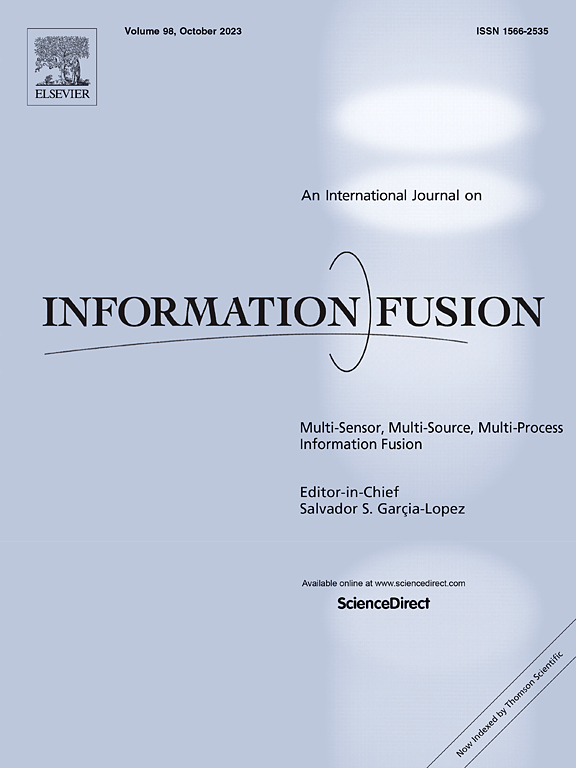Combining depth and frequency features with Mamba for multi-focus image fusion
IF 15.5
1区 计算机科学
Q1 COMPUTER SCIENCE, ARTIFICIAL INTELLIGENCE
引用次数: 0
Abstract
Deep neural network (DNN)-based multi-focus image fusion (MFIF) methods have achieved significant success in generating an all-focus image by extracting visual features from multiple partially focused images. However, these methods fail to fully exploit frequency domain and depth information, leading to limitations in handling uniform and boundary regions. To address this issue, we propose a Mamba-based multi-focus image fusion framework to enhance fusion quality. Specifically, we introduce the Wavelet Mamba Module, which applies multi-level wavelet transforms to decompose the image into different frequency components, thereby enhancing contrast differences in focused regions and improving feature extraction across different focal planes. Meanwhile, a depth estimation network is employed to predict the foreground depth map, aiding in the precise identification of boundary regions. Finally, the CSmamba decoder effectively integrates frequency and depth features and leverages channel and spatial attention mechanisms to generate an optimized decision map, enabling precise selection of focused pixels and producing a high-quality fused image. Experimental results on both synthetic and real-world datasets demonstrate that the proposed method outperforms state-of-the-art MFIF approaches in terms of quantitative metrics and visual details, validating that the effective utilization of frequency and depth information can significantly enhance multi-focus image fusion performance.
结合深度和频率特征与曼巴多焦点图像融合
基于深度神经网络(DNN)的多焦点图像融合(MFIF)方法通过从多幅部分聚焦的图像中提取视觉特征来生成全焦点图像,取得了显著的成功。然而,这些方法不能充分利用频域和深度信息,导致在处理均匀区域和边界区域方面存在局限性。针对这一问题,提出了一种基于mamba的多焦点图像融合框架,以提高融合质量。具体来说,我们引入了小波曼巴模块,该模块采用多级小波变换将图像分解成不同的频率分量,从而增强了聚焦区域的对比度差异,提高了不同焦平面之间的特征提取。同时,利用深度估计网络对前景深度图进行预测,有助于边界区域的精确识别。最后,CSmamba解码器有效地集成了频率和深度特征,并利用通道和空间注意机制来生成优化的决策图,从而能够精确选择聚焦像素并产生高质量的融合图像。在合成和真实数据集上的实验结果表明,该方法在定量指标和视觉细节方面优于最先进的MFIF方法,验证了有效利用频率和深度信息可以显着提高多焦点图像融合性能。
本文章由计算机程序翻译,如有差异,请以英文原文为准。
求助全文
约1分钟内获得全文
求助全文
来源期刊

Information Fusion
工程技术-计算机:理论方法
CiteScore
33.20
自引率
4.30%
发文量
161
审稿时长
7.9 months
期刊介绍:
Information Fusion serves as a central platform for showcasing advancements in multi-sensor, multi-source, multi-process information fusion, fostering collaboration among diverse disciplines driving its progress. It is the leading outlet for sharing research and development in this field, focusing on architectures, algorithms, and applications. Papers dealing with fundamental theoretical analyses as well as those demonstrating their application to real-world problems will be welcome.
 求助内容:
求助内容: 应助结果提醒方式:
应助结果提醒方式:


